Underwear dominates outerwear in fashion world
In a fashion world pushing for liberation, underwear is defying conservatism to become valid outerwear in the modern wardrobe. But what’s driving the shift?
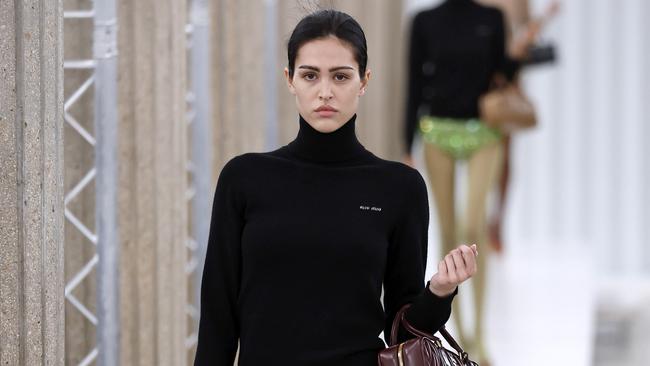
It’s not always about what’s on the surface, but what’s underneath that counts. That is, until the interior becomes the exterior and takes on a whole new meaning. Case in point: Miu Miu’s autumn/winter ’23/’24 runway show where models wore exposed underwear, underpinnings and intimate garments like sheer shift dresses and stockings, initially designed to be concealed. The opening outfit, a simple cardigan and skirt, featured delicate stockings tugged upwards on display.
Following them: knits and hooded jumpers devoid of matching bottom halves, instead paired with cotton briefs that exposed the legs and tights that provided a partial cover-up.
That energy was matched by Irish designer Simone Rocha, who showed revealing gowns not in the provocative, racy style of “naked dressing” – pinpointed in recent seasons by brands like Versace and David Koma – but in a personal way, through boudoir dresses and loose-fit bloomers that weren’t intended for seduction, but for rest and slumber.
So, why the harnessing of underwear as real-world pieces, made to be worn out and about? An obvious first answer is the trend of sheer pieces; fabrics became more and more transparent in recent seasons, necessitating a beautification of what’s on show. “As an underpinning, especially as we make so much in sheer fabrics, I wanted to consider what the exposed pieces beneath could be,” Rocha shares of her collection. “It is about an intimacy and how an intimate thing can become a protective thing, which can [also] be seen.”
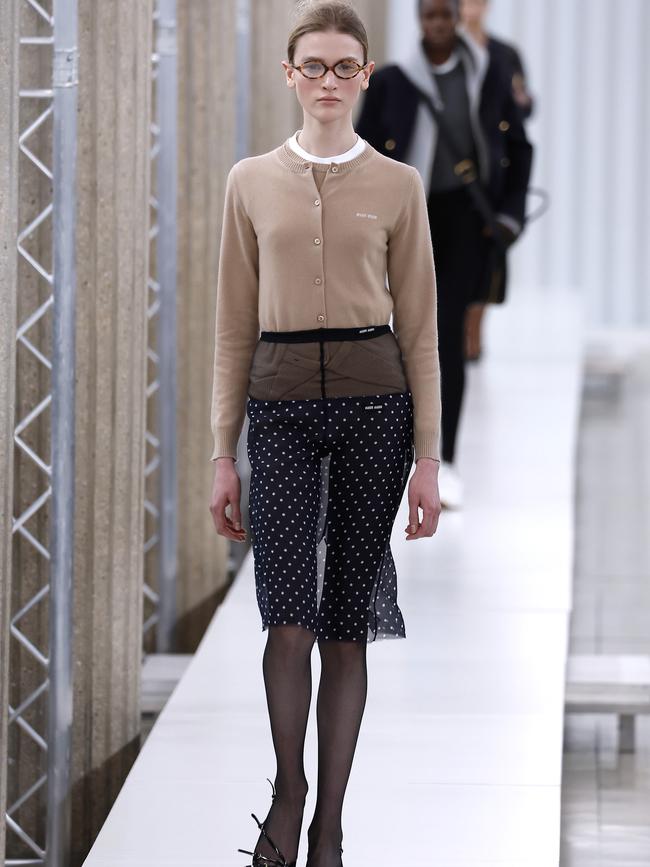
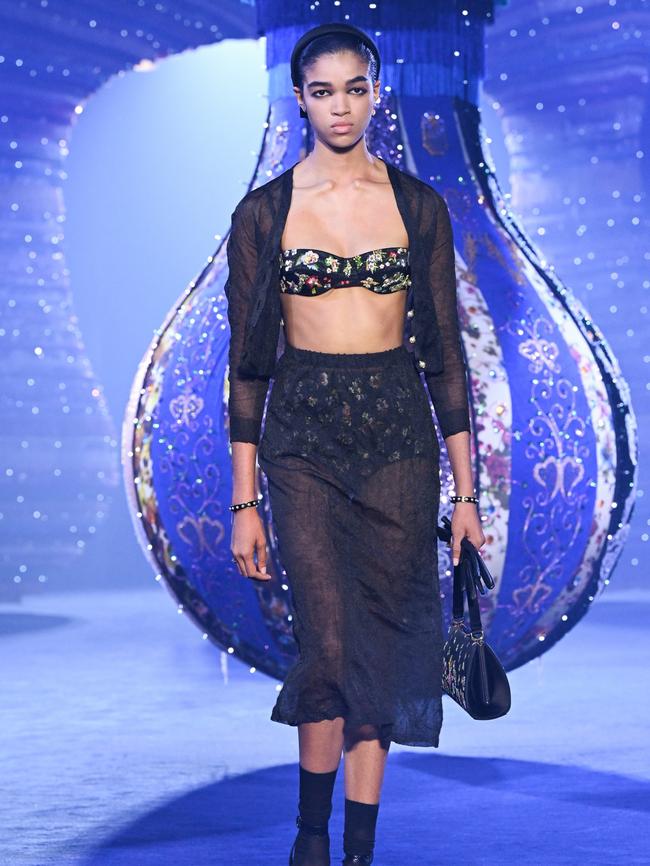
For women, underwear has long connoted intimacy and privacy, but as Rocha posits, it can also be used to represent strength and power. The prevalence of comfortable undergarments being worn as outerwear on the autumn/winter ’23/’24 runways – from Miu Miu to Ferragamo and Jacquemus – embodies not only this, but a new liberation away from age-old social standards that dictate when, and where, undergarments can be worn. It’s something cult designers Maryam Nassir Zadeh and Paloma Wool have recognised, selling sheer clothes designed to be layered with stockings and underwear, helping to bring underthings, quite literally, to a visible perch.
Laird Borrelli-Persson, a fashion historian and US Vogue’s archive editor, sees the prevalence of discernible underpinnings as the latest unpicking of modesty in women’s fashion. She mentions corsets, which were strictly hidden until the 1980s and 90s, before anti-establishment designers Vivienne Westwood and Jean Paul Gaultier made ones for being worn on their own. Provocative at the time, they were gradually distilled into fashion’s wider sphere, and now, are an accepted item of clothing for everyday wear.
“Change comes by rejecting – or I prefer to think of it as ‘spring-boarding’ – the past,” Borrelli-Persson says. “You affect change by morphing, building on, or rejecting what has come before. When these changes vibe with developments in culture, they have a particular relevance.”
“It’s speaking to the idea that women are controlling their own narrative of what it is to be sexy, or be themselves”
Discussions about women’s rights in 2023 are a cultural touchpoint, as the egalitarian future many hoped for hasn’t materialised. The US Supreme Court’s overturning of the Roe v Wade abortion ruling last year was a reminder that gender equality is a constant fight. Fashion reflects the world, and the harnessing of clothes once considered off-limits serves as an act of rebellion, pushing against patriarchal policing of modern womanhood.
The past few years on the runways, where fashion designers have been exploring more liberated views of feminine dressing, can be read as an expression of this. During autumn/winter ’22/’23, runways were filled with barely there party looks, from netted skirts at Prada to transparent camisoles at Fendi. Then, for spring/summer ’23, diaphanous clothes were presented not just as decorative, but as wardrobe items made for everyday; take Ferragamo’s gauzy kaftans or the size inclusive party dresses by emerging name Ester Manas.
The inclusion of actual underwear is a logical next step and, paired with the post-pandemic desire to dress emphatically after a year of tracksuit pants and slippers, created a perfect storm of expression – one that Libby Page, Net-A-Porter’s market director, says translated at the check-out.
“Following spring/summer ’23 fashion month, we saw customer searches for ‘sheer tops’ increase by 600 per cent compared to the previous season, and a 400 per cent increase in searches for transparent heels,” Page notes. While she says visible underthings might still be “a little risqué” for Net-A-Porter’s clients, she predicts forthcoming popularity through modern, minimalist embraces of undergarments, and mentions Bottega Veneta’s autumn/winter ’23/’24 show, where ultra-fine dresses had briefs and boned corsets underneath.
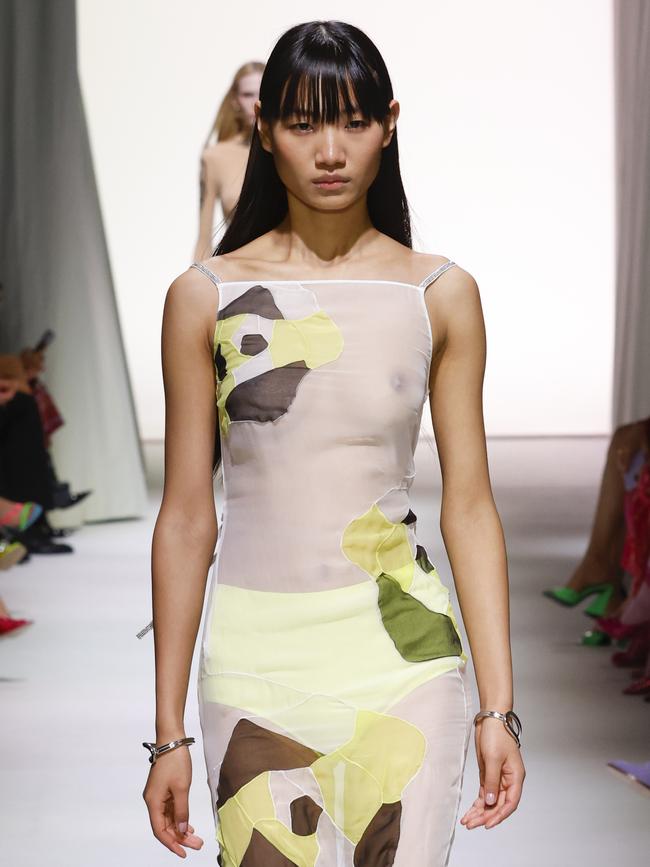
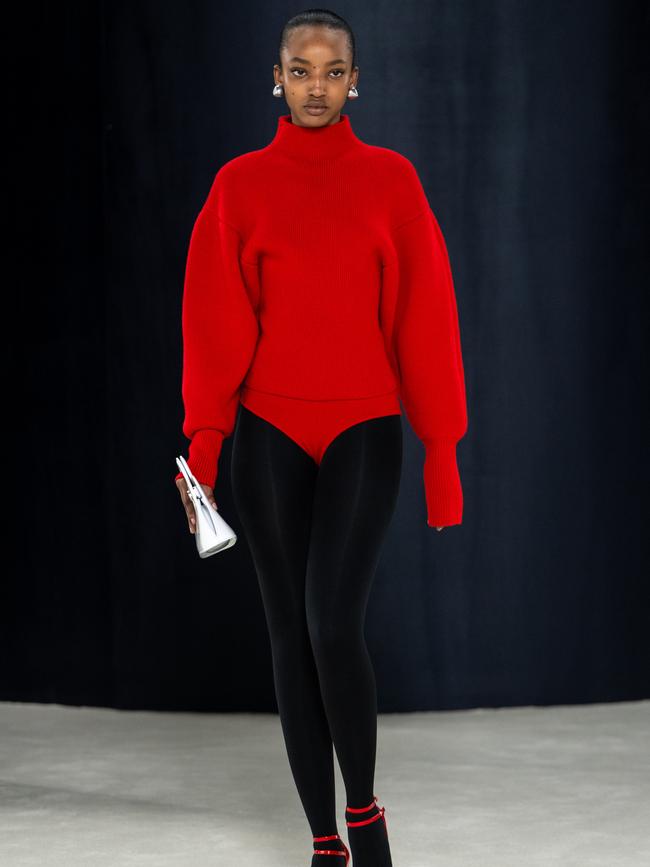
Page specifies there are ways to wear these pieces as outerwear for early adopters, who are already experimenting with what’s in the underwear drawer; take nude bodysuits, which offer “a more understated approach that embraces nudity in a subtle and chic way”, while also noting emerging designer Clio Peppiatt and her wearable bustiers.
Other brands are focused entirely on underclothes made to be worn as outerwear. American brand HommeGirls was launched by Thai American designer Thakoon Panichgul in 2019 and popularised men’s-style elastic boxer shorts for women. Famous women, from Lisa from Blackpink to Tracee Ellis Ross, wear HommeGirls’s jockeys tucked visibly over their trousers or skirts, or simply alone as outerwear, as a comfortable alternative to lacy, form-fitting lingerie. Panichgul says men’s underwear, and its looseness when sitting on the body, creates sex appeal “because you’re able to see femininity a lot more”.
Harrolds, HommeGirls’s Australian stockist, reports continued success from the brand, and buyer Amber Malatt says customers enjoy layering them on their own or having them peek out from under waistbands. “As we enter a new way of dressing, veering away the from high-octane glamour of past seasons, a newfound appreciation for subtle minimalism [has taken] centre stage,” she shares, in part explaining the swing away from overt sexuality, to a more personal sensuality.
For Panichgul, the brand’s intention is for more long-term change. “It’s speaking to the idea that women are controlling their own narrative of what it is to be sexy, or be themselves,” he says. He’s one of many, trying to push the needle on what has historically been the opposite of this.
Until now, underwear has been considered the most intimate, private item of clothing there is – both for its closeness to the body, and its ability to reveal the most protected parts of oneself. As fashion, and designers like Panichgul embrace undergarments with open arms, it’s a timely reminder that perception is only surface level.
This article appears in the August issue of Vogue Australia, on sale now.




To join the conversation, please log in. Don't have an account? Register
Join the conversation, you are commenting as Logout